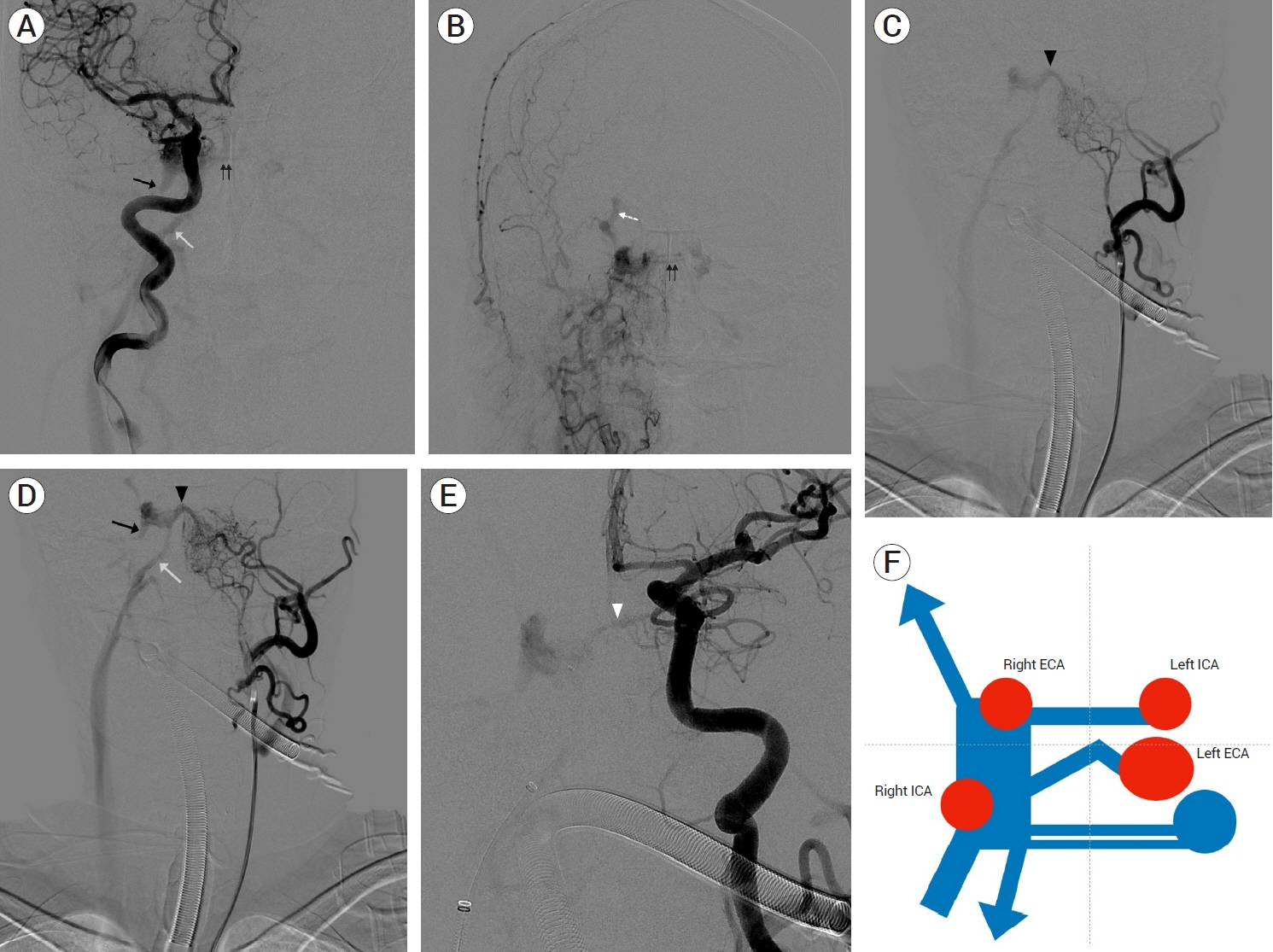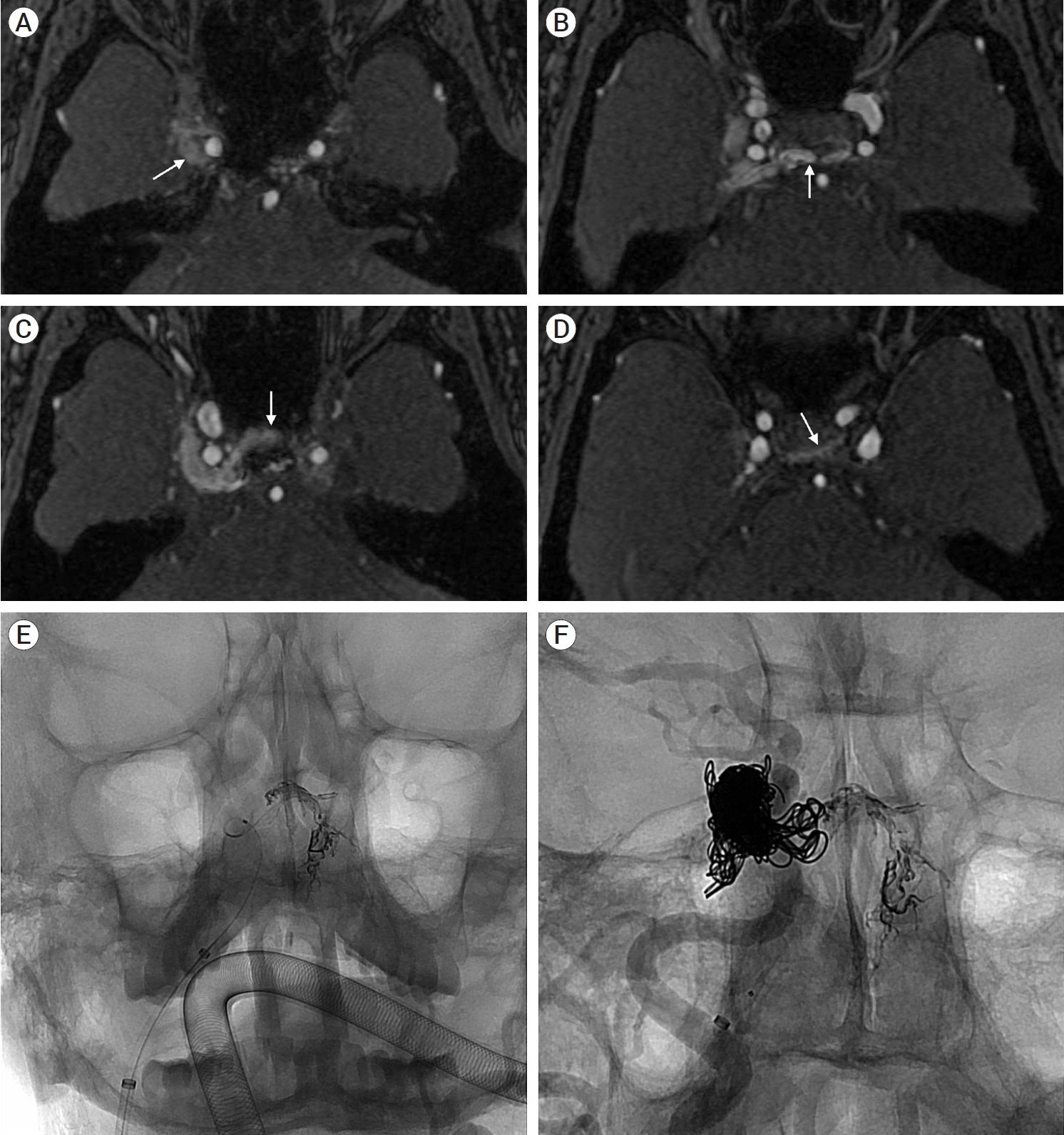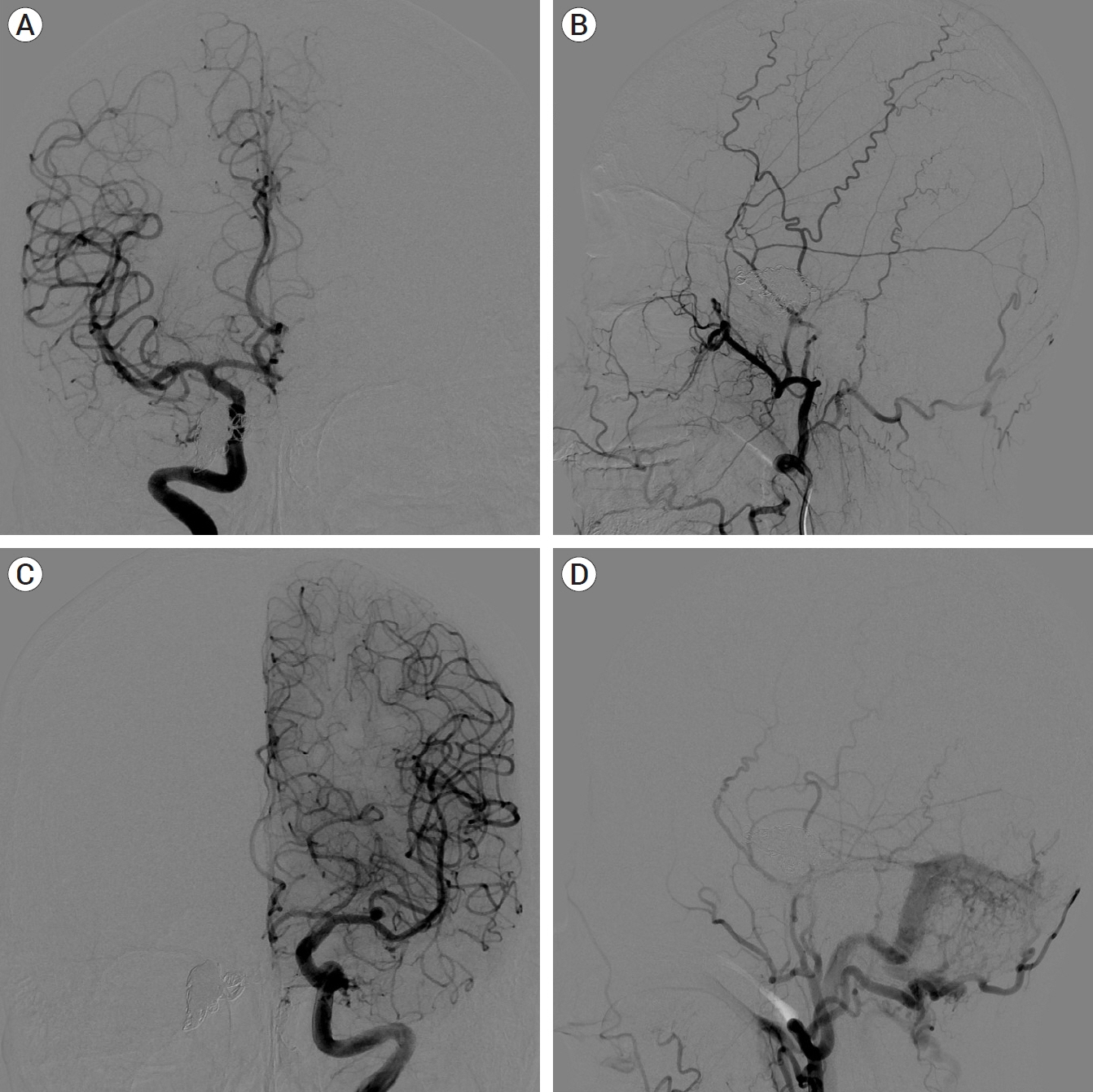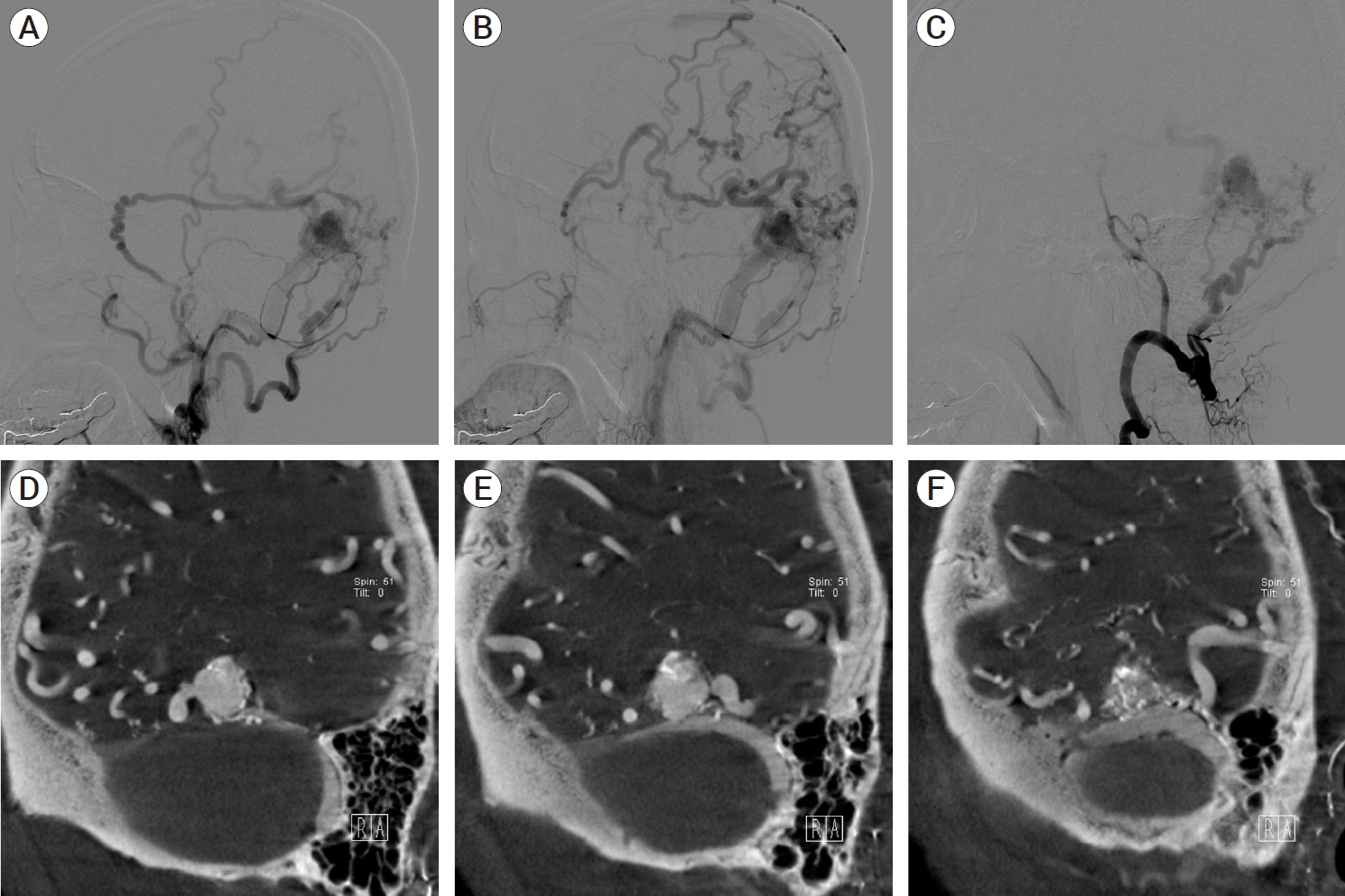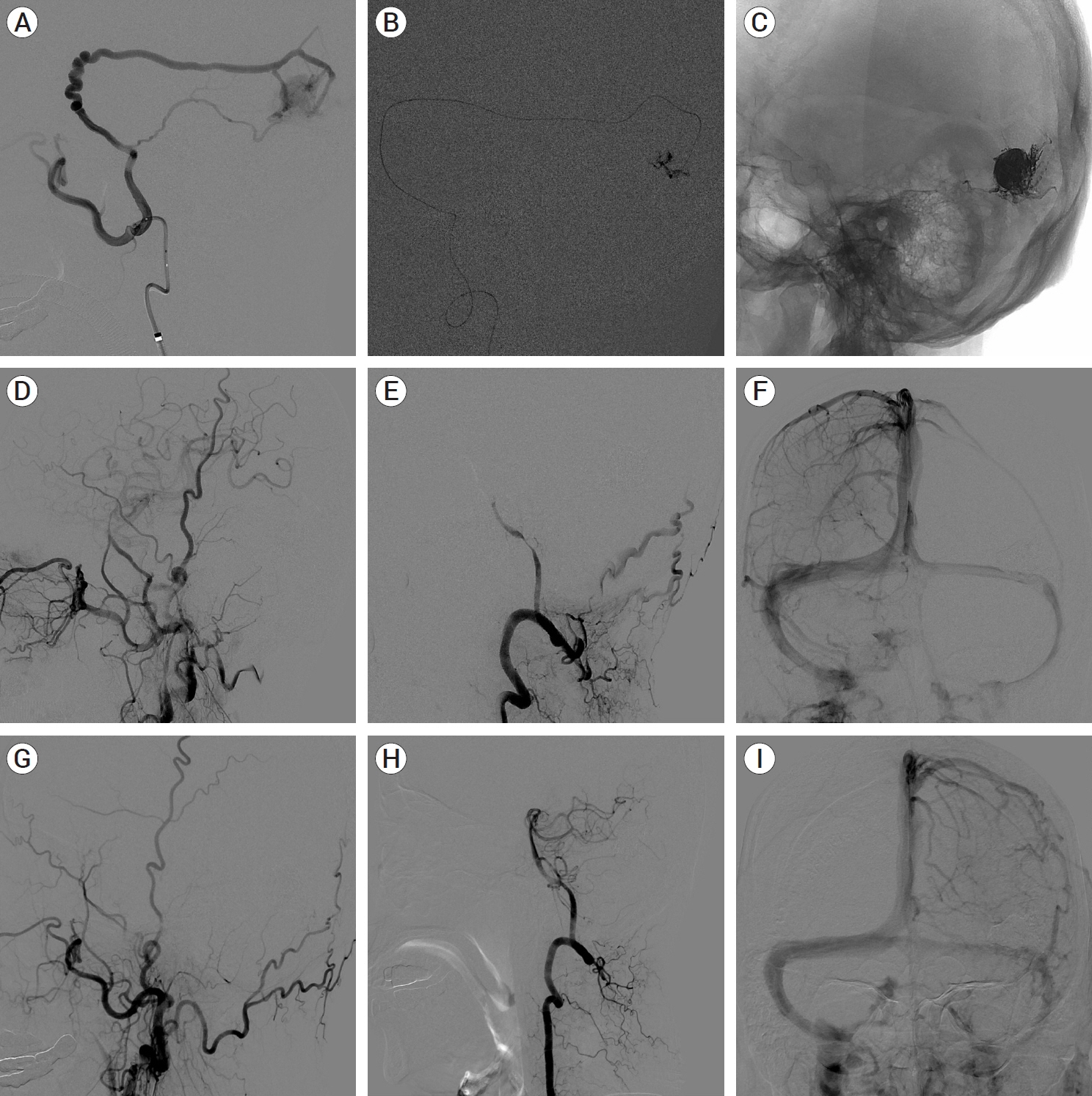J Cerebrovasc Endovasc Neurosurg.
2024 Jun;26(2):119-129. 10.7461/jcen.2023.E2022.10.001.
Usefulness of sectional images in dural AVF for the interpretation of venous anatomy
- Affiliations
-
- 1Department of Radiology, Dong-A University Hospital, Busan, Korea
- KMID: 2556974
- DOI: http://doi.org/10.7461/jcen.2023.E2022.10.001
Abstract
- Knowledge of the venous anatomy is essential for appropriately treating dural arteriovenous fistulas (AVFs). It is challenging to determine the overall venous structure despite performing selective angiography for dural AVFs with feeder from multiple selected arteries. This is because only a part of the veins can be observed through the shunt in the selected artery. Therefore, after performing selective angiography of all vessels to understand the approximate venous anatomy, the venous anatomy can be easily understood by closely examining the source image of computed tomographic angiography or magnetic resonance angiography. Through this, it is possible to specify the vein that is to be blocked (target embolization), thereby avoiding extensive blocking of the vein and avoiding various complications. In the case of dural AVF with feeder from single selected artery, if the multiplanar reconstruction image of the three-dimensional rotational computed tomography obtained by performing angiography is analyzed thoroughly, a shunted pouch can be identified. If embolization is performed by targeting this area, unnecessary sinus total packing can be avoided.
Keyword
Figure
Reference
-
1. Bhatia KD, Lee H, Kortman H, Klostranec J, Guest W, Wälchli T, et al. Endovascular management of intracranial dural arteriovenous fistulas: Transarterial approach. AJNR Am J Neuroradiol. 2022; Mar. 43(3):324–31.
Article2. Bhatia KD, Lee H, Kortman H, Klostranec J, Guest W, Wälchli T, et al. Endovascular management of intracranial dural AVFs: Transvenous approach. AJNR Am J Neuroradiol. 2022; Apr. 43(4):510–6.
Article3. Kiyosue H, Tanoue S, Hori Y, Hongo N, Mori H. Shunted pouches of cavernous sinus dural AVFs: Evaluation by 3D rotational angiography. Neuroradiology. 2015; Mar. 57(3):283–90.
Article4. Kiyosue H, Tanoue S, Okahara M, Hori Y, Kashiwagi J, Sagara Y, et al. Angioarchitecture of transverse-sigmoid sinus dural arteriovenous fistulas: evaluation of shunted pouches by multiplanar reformatted images of rotational angiography. AJNR Am J Neuroradiol. 2013; Aug. 34(8):1612–20.
Article5. Tagawa M, Inoue A, Murayama K, Matsumoto S, Ozaki S, Nishikawa M, et al. Utility of targeted balloon protection of the venous sinus for endovascular treatment of dural arteriovenous fistula by transarterial embolization with Onyx: A case report and literature review. Surg Neurol Int. 2021; Jul. 12:340.
Article6. Torok CM, Nogueira RG, Yoo AJ, Leslie-Mazwi TM, Hirsch JA, Stapleton CJ, et al. Transarterial venous sinus occlusion of dural arteriovenous fistulas using ONYX. Interv Neuroradiol. 2016; Dec. 22(6):711–6.
Article
- Full Text Links
- Actions
-
Cited
- CITED
-
- Close
- Share
- Similar articles
-
- Iatrogenic mixed pial and dural arteriovenous fistula after pterional approach for surgical clipping of aneurysm: A case report
- Transvenous coil embolization of hypoglossal canal dural arteriovenous fistula using detachable coils: A case report
- A Rare Case of Subarachnoid Hemorrhage caused by Ruptured Venous Varix Due to Dural Arteriovenous Fistula at the Foramen Magnum Fed Solely by the Ascending Pharyngeal Artery
- Surgical Treatment of Carotid-Cavernous Fistula and Intracranial Dural Arteriovenous Malformations
- Delayed Dural Arteriovenous Fistula after Microvascular Decompression for Hemifacial Spasm


